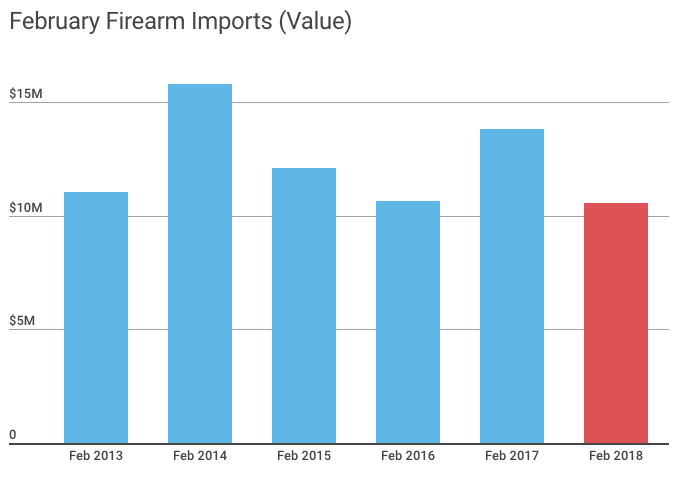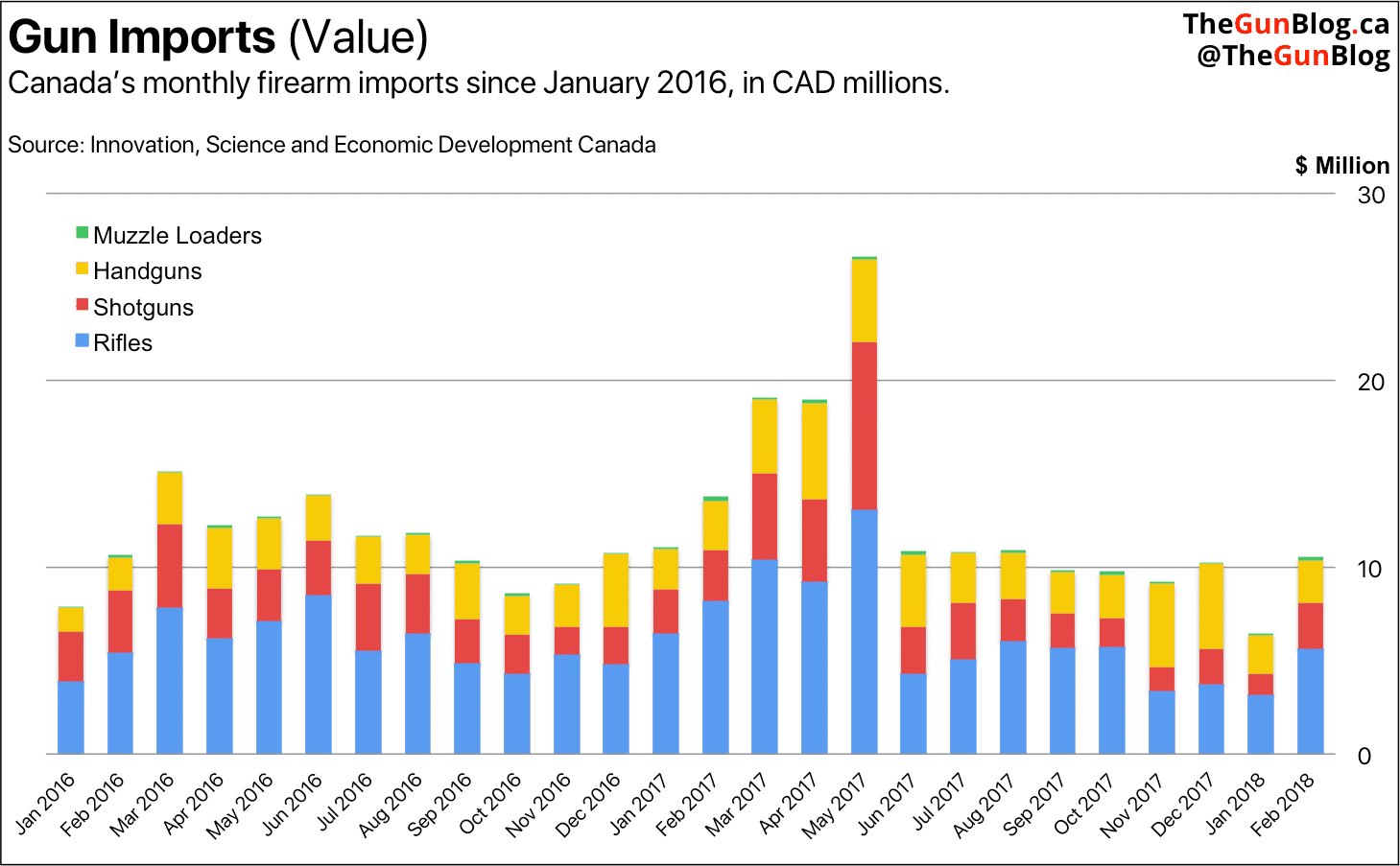TheGunBlog.ca — Canadian gun imports, an indirect measure of the strength of the firearm industry, fell to the lowest February in six years, with rifles, shotguns and handguns all down.
It was only the second time in the past six months that shipments exceeded $10 million, as companies prepare for another year of turbulence.
The value of inbound firearms dropped to $10.5 million in February from $13.8 million in the same month last year, Statistics Canada said today. This year saw the lowest January and February since 2012.
Shooting is one of Canada’s most-popular sporting activities, and almost every gun sold in the country comes from abroad. Companies order less when they expect demand to slow.
Although the import data reflect orders placed last year, and monthly figures can vary widely, they provide one of the only windows into the economics and expectations of the firearm industry since businesses keep their accounts private.
Imports Feb. 2018 vs. Feb. 2017
- ↓ Total Firearms: -23% to $10.5 million
- ↓ Rifles: -31% to $5.6 million
- ↓ Shotguns: -9.7% to $2.4 million
- ↓ Handguns: -14% to $2.3 million
- ↑ Ammunition: +19% to $11.6 million
- ↓ Parts & Accessories: -1.2% to $4 million
More Turmoil Ahead
Business last year saw a drop in sales and the risk of new import restrictions. Importers, distributors and retailers are in for a second year of turmoil:
- Slowing growth in the number of new shooters.
- A major retailer of shooting supplies expects the hunting market to be flat.
- The government is planning a new law, Bill C-71, to ban more than 10,000 guns immediately, make it easier to prohibit even more, make it harder to have a gun licence, and make it harder to buy firearms.
- The government’s new import restrictions, the Firearms Marking Regulations, threaten to cripple the inustry when they start on Dec. 1.
Find this useful? Consider subscribing. You won’t find it anywhere else.
The challenges follow a “very, very” big drop in sales last year that pushed some stores out of business as floods and fires in Alberta and British Columbia shut down hunting and sport shooting.
At this time last year, companies were ramping up imports to bring in new models of firearms and to stock up before the expected June 1 start date of the new import restrictions. The government deferred them last May.
Why Imports Matter
Imports tend to rise in the first half of the year and fall in the second half, and figures for a single month don’t necessarily indicate a trend. Taking three months at a time, it was the lowest December-January-February since 2013. The value and the number of incoming firearms were both about 20 percent below their 12-month average.
Companies order the guns that they expect clients will buy or ones that have already been contracted, such as for police.
It typically takes three to six months from when companies place a purchase until shipments arrive, so the latest figures reflect the outlook in the fall.
(Correction 18:35 Toronto time: Corrects import figures, charts, and second paragraph after data update.)
Related Information
- Gun Imports 2017: Overview of the Firearm Industry in Charts
- Gun Imports Plunged to Five-Year Low in January as Sales Slump
- Gun Industry Faces Turmoil, Costs as UN Marking Deadline Nears
The most important part of gun rights isn’t “gun,” it’s “rights.”

